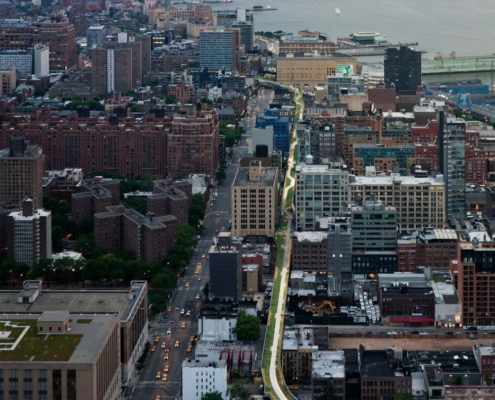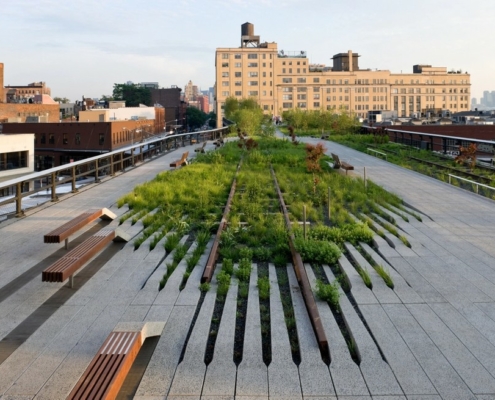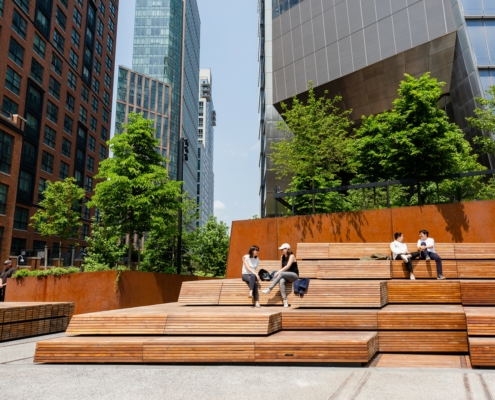"
The High Line was the former West Side industrial railway. It is a 1.45 mile-long elevated, steel structure built in the 1930s for freight trains; the last train ran on it in 1980. Stretching across the west side of the city, it runs from Gansevoort Street, in the Meatpacking District, through the West Chelsea gallery neighborhood, and ends at 34th Street, next to the Jacob Javits Convention Center. The winning proposal by James Corner Field Operations with Diller Scofidio + Renfro includes over a dozen access points to the elevated park. Whichever entrance is activated, a key component will attract users to spend time and explore the complete park. For instance, enter a little past 14th St. and enjoy the sundeck and water feature; enter close to 23rd St. to lounge on the open lawn and seating steps; or enter past 26th St. to enjoy the viewing area. Inspired by the wild seeded landscape left after the line had been abandoned, the team created a paving system that encourages natural growth which creates a ‘pathless’ landscape. ”Through a strategy of agri-tecture - part agriculture, part architecture – the High Line surface is digitized into discrete units of paving and planting which are assembled along the 1.5 miles into a variety of gradients from 100% paving to 100% soft, richly vegetated biotopes,” explained DS + Renfro. This undefined and unobtrusive environment allows the public to meander and experience the park as they wish. Before the new landscape could take form atop the High Line, every component of the structure was tested and treated to ensure its structural strength. As each piece of rail was removed, it was marked and mapped so that later, it could be returned to its original location as an integrated planting piece. Energy-efficient LED lights gently illuminate the park’s pathways and allow the eyes to adjust to the ambient light of the surrounding city sky. Lights installed on the underside of the High Line illuminate the sidewalk below. The new space will offer greening opportunities, alternative transportation options, and social benefits to meet changing needs in urban environments. It is expected that the radical infrastructure conversion will attract thousands from around the world in its opening season.
"
Tags: new york city, Recent
Information provided in part by: Arch Daily







